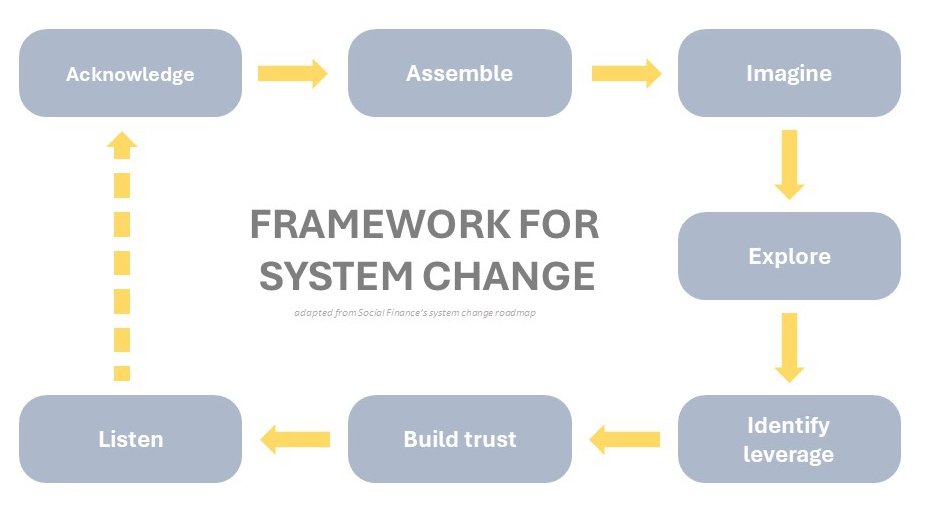Leading system change ... an inside-out process
Part 1
One of the many things that struck me at both the Forum Strategy and Confederation of School Trust conferences this year was the desire expressed by MAT leaders for support with leading change, and particularly with leading change in complexity.
A complex system is one in which even knowing everything there is to know about the system is not sufficient to predict what is likely to happen next, particularly when you start bending it. MATs and schools, like other public bodies, are complex systems, and the leadership of change in them needs to work with that complexity rather than seek to simplify it. Fundamentally, this requires the leader(s) to adopt a specific stance so they are better able to keep the whole system in view as changes to the parts (i.e. structures, process, strategy, staff, culture, etc) are made. This stance can be coached and trained, as can the mindsets needed to cope when the inevitable unintended effects of change arise across your complex system.
I tend to begin my change management consultancy by developing an appreciation for this, which can in itself take time. Leaders in education are very aware of risk and the potential of adverse consequences for the young people in their care, as well as their staff. Often the very idea that they will not and cannot know precisely what will happen is hard to swallow, and sometimes vigorously - even aggressively - defended against.
Providing a structure to hold on to helps with this sense of being out of control, and I use a framework for system change - borrowed and adapted from some great work at Social Finance - to provide those handholds.
What it also does is emphasise how successful change in a complex system is all about shifting mindsets, building relationships and creating legitimacy through listening and adapting. In other words, successful system change is about working with people at least as much (and in reality far more) than it's about working with 'things', and it's about being adaptive and responsive to feedback from those people as things progress:
ACKNOWLEDGE that you’re operating in a complex system and what this means for change management.
ASSEMBLE a change team, learn about system thinking, agree how to work together, and set the tone.
IMAGINE possible futures and a renewed vision for what they may need from your system and your leadership.
EXPLORE how the planned change may impact the system as a whole, and may cause new challenges elsewhere.
IDENTIFY LEVERAGE to intervene in ways that will have the greatest and most positive impact.
BUILD TRUST, credibility and legitimacy by engaging the wider system and creating the conditions for change.
LISTEN to what the system is telling you about your impact, learn from this, and adapt accordingly.
My underlying aim in using this framework is to enable leaders to focus on helping their staff feel they belong to the changed state. Research in system leadership and the management of change in complex human systems by Deborah Rowland and many others indicates that this experience of belonging is the key driver of successful and lasting change.
But how can leaders build that experience of belonging?
Rowland's research also provides us with insights into that, and we'll explore her Change Vitality model for leadership in the second part of this piece next week.
But by way of a clue, it starts with you as a leader, and in particular your inner capacities. It starts with how people experience your 'being' as a leader, and how that then matches up to what people can see you doing.
It’s an inside-out process.


